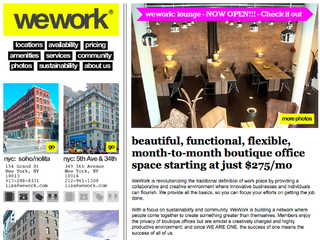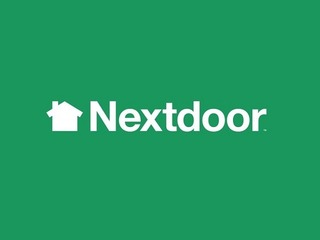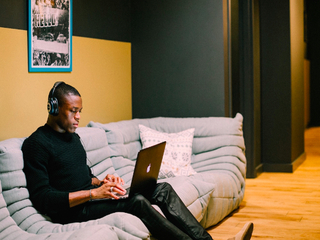

It’s a look back at the modest days of startups, what traction they had in their first few years, and how they evolved. In the end, we hope to provide a glimpse into what great startups looked like in their first three years.
Stories like these are always well received because it reminds us that anyone, regardless of pedigree and environment, can rise above the noise and have great influence. They show us the value of being resilient, persistent, and committed. If we can follow their footsteps, maybe we too can have similar success.
My last segment in this series focused on Lyft. This segment is on WeWork.
— WeWork’s First Year —
Created: February 2010. But the idea came earlier.
In 2006, Adam Neumann (eventual founder and CEO of WeWork) partnered with children’s clothing designer Suzan Lazar to create the brand Egg Baby, a clothing brand with padded knees to protect infants as they crawled around, according to the Real Deal.
Then in 2008, he partnered with his friends Miguel McKelvey and Gil Haklay to persuade Brooklyn landlord Joshua Guttman to let them use some portions of a vacant office building. They called the venture Green Desk, as it focused on coworking spaces using recycled furniture and sustainable energy.
Though Guttman was initially skeptical, the model proved wildly successful. Neumann and his colleagues eventually sold the business to Guttman at a $3 million valuation, and used the initial $300,000 in cash as a deposit for a new location in SoHo. That would be the beginning of WeWork.
Founders (ages at the time): Adam Neumann (31) and Miguel McKelvey (35)


Initial company description: “WeWork is revolutionizing the traditional definition of work place by providing a collaborative and creative environment where innovative businesses and individuals can flourish. We provide all the basics, so you can focus your efforts on getting the job done.
“With a focus on sustainability and community, WeWork is building a network where people come together to create something greater than themselves. Members enjoy the privacy of boutique offices but are amidst a creatively charged and highly productive environment; and since WE ARE ONE, the success of one means the success of all of us.”
Traction and expansion – at four months: By June 2010, WeWork already had 350 members.
Members, however, came in various shapes and sizes, as evidenced by the complex pricing system below. For those that just wanted access to the open “lounge” space (plus some additional perks), the setup fee was $100 and then either $85 (for three days per month) or $275 per month (for unlimited days). Members that wanted access to actual office space or desks would pay between $99 and $1,450 per month, again depending on the level of need. Roughly assuming a median of $275, that means WeWork was making nearly $100,000 per month at this point.
At this time, the company had two locations in New York City: one at 154 Grand St in the SoHo/NoLIta district and also one at 349 5th Avenue, directly across from the Empire State Building. (Generally, WeWork signs up for long-term leases of commercial spaces in these buildings, though it has purchased one of its locations outright.)


— WeWork’s Second Year —
New business – at one year and one month: In March 2011, WeWork launched WeWorkLabs, a hybrid between its core coworking spaces and a technology incubator:
“In addition to offering entrepreneurs great space to build their own products, our overarching goal is to foster collaboration among intelligent, creative and driven individuals who may not have otherwise had the opportunity to connect. We believe that by creating an environment like this, innovative new technologies, products and services will be born.
“The idea is to provide 50 of New York’s most talented community members with the essentials, and then leave the rest up to them. We will also provide the members a network of mentors to help people take their projects/products to the next level.”
Basically, they were looking for startup companies, freelance designers/developers, PR/Marketing professionals, writers, or “anyone with an entrepreneurial spirit” to fill up spaces at WeWork at a sponsor subsidized price of $250 per desk per month.


Expansion – at one year and seven months: In September 2011, WeWork opened its third location in New York City—at 1 Little West 12th St in the Meatpacking district.
First funding and expansion – at one year and eight months: In October 2011, WeWork quietly raised a $1 million round of funding—its first official infusion of outside capital. Investors were not disclosed.
The company also opened its fourth location and the first one outside of NYC—at 156 2nd St in San Francisco’s SoMa district. Meanwhile, demand remained hot in New York: the company says it had a six-month waiting list of tenants.
Expansion – at one year and 10 months: In December 2011, WeWork announced it would be moving WeWork Labs to a dedicated location at 175 Varick St to give it more room to grow.
“We hope to take the current incubator format to the next level and will accommodate and mentor hand-selected tech companies in their different stages of growth,” Onepager cofounder and WeWork Labs handyman Matt Shampine told Betabeat.
Second funding – at one year and 11 months: In January 2012, WeWork closed $6.85 million in a second round of funding. As with the company’s first round, no investors were disclosed, suggesting this was an angel round. The company said it would use the money to open a second space in San Francisco and one in Israel, as well as to build out member management technology.
“We try to choose only ‘we’ investors,” said WeWork CEO Adam Neumann. “Not just anyone we who offers us money— investors who have a ‘we’ mentality which means they care about the bigger picture… and think collaboration is the future of innovation.”
— WeWork’s Third Year —
Expansion – at two years: In February 2012, WeWork opened a new location in SoHo West, which would be its sixth location and its fourth in New York City.
Traction – at two years and one month: By March 2012, WeWork had over 40 employees and approximately 2,000 members.
Expansion – at two years and three months: In May 2012, WeWork opened its first location in LA in a deal valued at $15 million. Backed by IO Ventures, the location would also house a movie technology incubator.
The company said at this point that it was hoping to fill its new spaces with entrepreneurs and small-business freelancers. WeWork would screen potential tenants to make sure they were bringing a wide variety of business specialties. Neumann boasted that the space gave tenants the power of a larger company without having to join a larger company:
“If you are a member of the WeWork community, we can get your lawyer, accounting services, PR, IT person and brander all for less than $10,000,” Neumann told the Los Angeles Times.
Traction – at two years and seven months: By September 2012, WeWork had approximately 3,000 members at eight locations (six in NYC, one in SF, and one in LA).
Traction – at two years and 11 months: By January 2013, on the eve of it’s third anniversary, WeWork had over 75 employees.


Images courtesy of Internet Archive’s Wayback Machine.



















